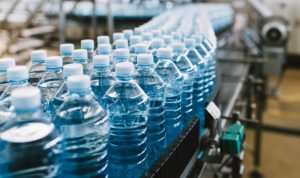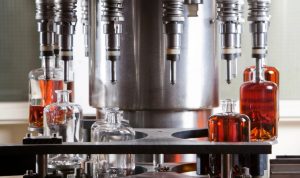Table of Contents
Before today’s high-speed filling lines and continuous-working robots, every bottle had to be poured by hand.
Imagine trying not to spill a drop while standing and filling a bottle after a bottle all day. It used to be like that. People also understood then that they needed to create something better for output to increase.
Accordingly, the history of bottle-filling machines is essentially the narrative of people’s attempts to simplify their work. What began as a few ingenious bucket and valve techniques evolved into fully automated systems that fill thousands of bottles every hour.
In this article, we’ll walk you through that evolution, demonstrating how things evolved and why it was important!
How Bottle Filling Machines Evolved from Manual to Automated Systems?
The First Filling Machines

The solutions had to be as basic as those times in which they lived when individuals first started considering automating the process of filling bottles and containers.
It all began as they depended on fundamental concepts like gravity since they lacked access to sophisticated gear.
The basic gravity-fed filling machine and the ground-breaking vacuum-powered bottle filler are two early varieties of bottle-filling machines that served as models for today’s technology.
We’ll examine both in more detail in this section!
Gravity-Fed Filling Machines
Let’s talk about the early days when people were striving to create a machine that would enable them to avoid doing everything by hand.
They used fundamental laws of nature since they lacked electronics, pumps, and sensors. The first gravity-fed liquid-filling devices were created in this manner.
Consider a tall tank or vessel and fill it with water, wine, oil, or other liquid. You also placed a bottle underneath it. The liquid begins to seep as soon as you open the valve. Gravity does the spinning and pumping; you don’t need to push anything independently; liquid moves from higher to lower.
Basically, people stood next to those machines and manually opened and closed the valves. They had to be careful when the bottle was filled so as not to boil over. It wasn’t fast or precise, but it meant less work than pouring with a funnel or ladle every time. Most importantly, more bottles could be filled at once.
That’s how it started. Simple, but smart for the time. No electricity, no automatics, just a little common sense and gravity. Those were the first machines. Of course, more modern ones came later, but these first laid the foundations.
So, many of the principles used in these early machines are still relevant in the design of today’s inline bottle filling machines, just implemented with greater precision and automation.
Vacuum-Filling Machines

When the mass bottling of drinks, especially carbonated drinks, began, people realised they could no longer rely on the simplest methods, such as gravity pouring. It was too slow, it wasn’t precise, and most importantly, it was a problem with carbonated drinks because chaos ensues when the liquid starts foaming.
That’s when engineers and artisans started looking for a smarter way, and that’s how they came up with vacuum-powered machines. And it works like this: first, the air is taken out of the bottle, a space is created, and then the liquid – say juice or beer – is just “sucked” inside.
No one presses anything, and nothing is pushed – the air pressure does it all by itself when there is no air inside.
This meant that the bottle could be filled quickly and evenly, without spillage or foam, and all the bottles turned out the same, which is very important when you make thousands of bottles daily. And what was a revolution then? less waste, faster production, and more stable product quality.
That’s why these vacuum machines were a big step forward. People with funnels and pipes no longer worked, but you had a system that did everything precisely and reliably. And that was the beginning of serious industrial production of bottled drinks.
Modern systems like the automatic piston bottle filler allow precise dosing and minimal waste.
These systems not only improved efficiency but also inspired innovations that led to the creation of the automatic piston bottle filler, a staple in today’s bottle filling machines market.
So, at the beginning of the 20th century, people began to seriously use electric machines in the industry for the first time. Until then, everything was done more or less manually or with elementary mechanisms.
But with the advent of electricity, things began to speed up seriously. They started making machines that could fill jars, bottles, and cans. They were not perfect, but it was a real revolution then, such as gravity-fed and vacuum-filling machines.
Final Thoughts
It all started from a simple idea: people no longer have to manually pour liquid into each bottle. Nothing more than that. And then that simple need to save time and effort to start the process that last for decades.
Initially, they used what was at hand was natural forces, such as gravity. There was no electricity, no electronics, no precise systems. Only smarts, practice, and attempts. From that, they made the first machines, which made the job even a little easier.
Then people started to develop better solutions, such as a vacuum, where the air practically “pulls” the liquid into the bottle. It was already seriously more advanced.
Faster, cleaner, no spillage. That was a key moment because when those systems started to be used, everything started to resemble real production as we know it today.
Later came electricity, then automation, then electronics. And each new generation of those machines was more intelligent, precise, and faster.
Today, robots and artificial intelligence do it. Sensors monitor everything, and everything is controlled in real time. People almost don’t participate anymore – they monitor.


